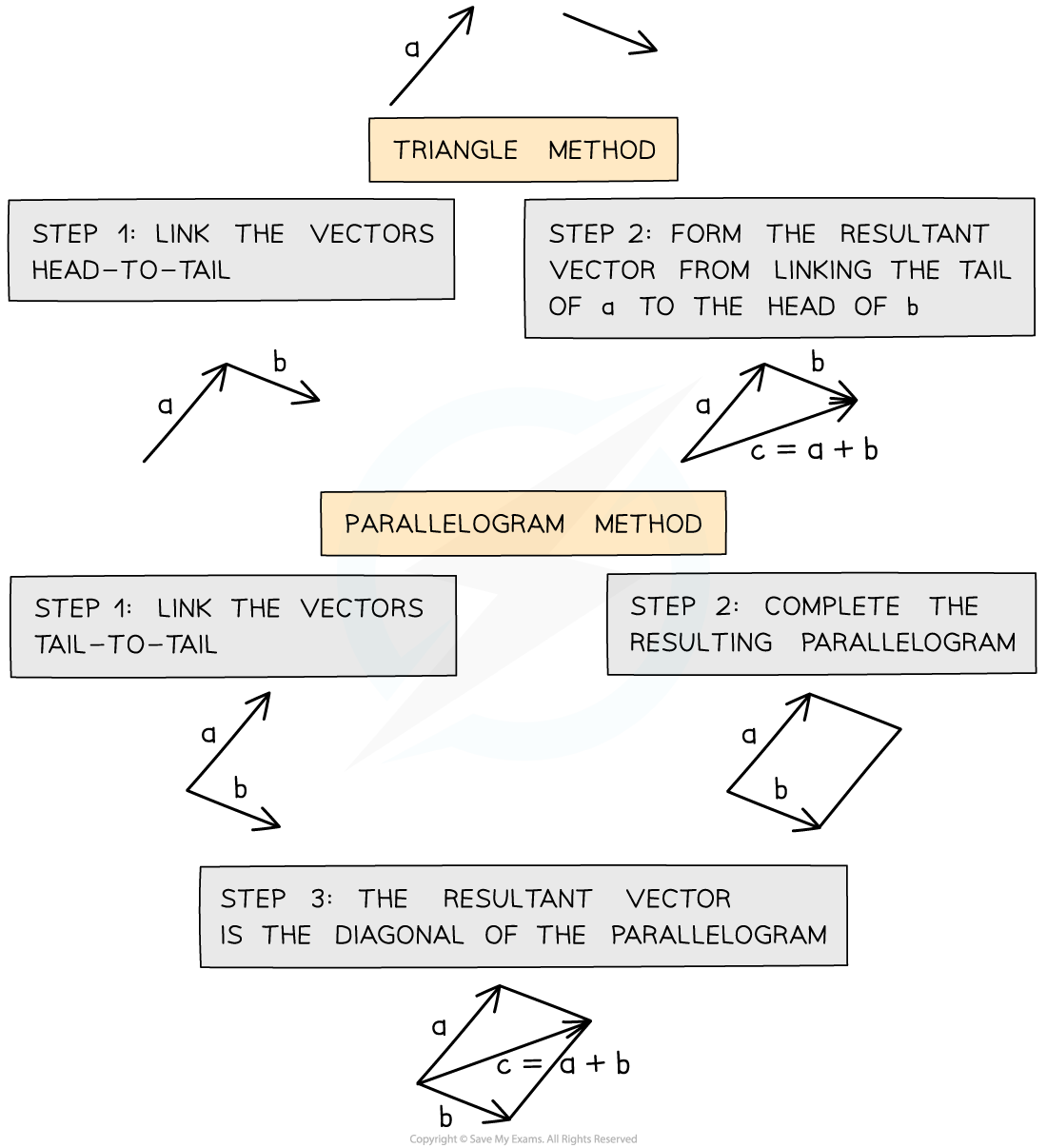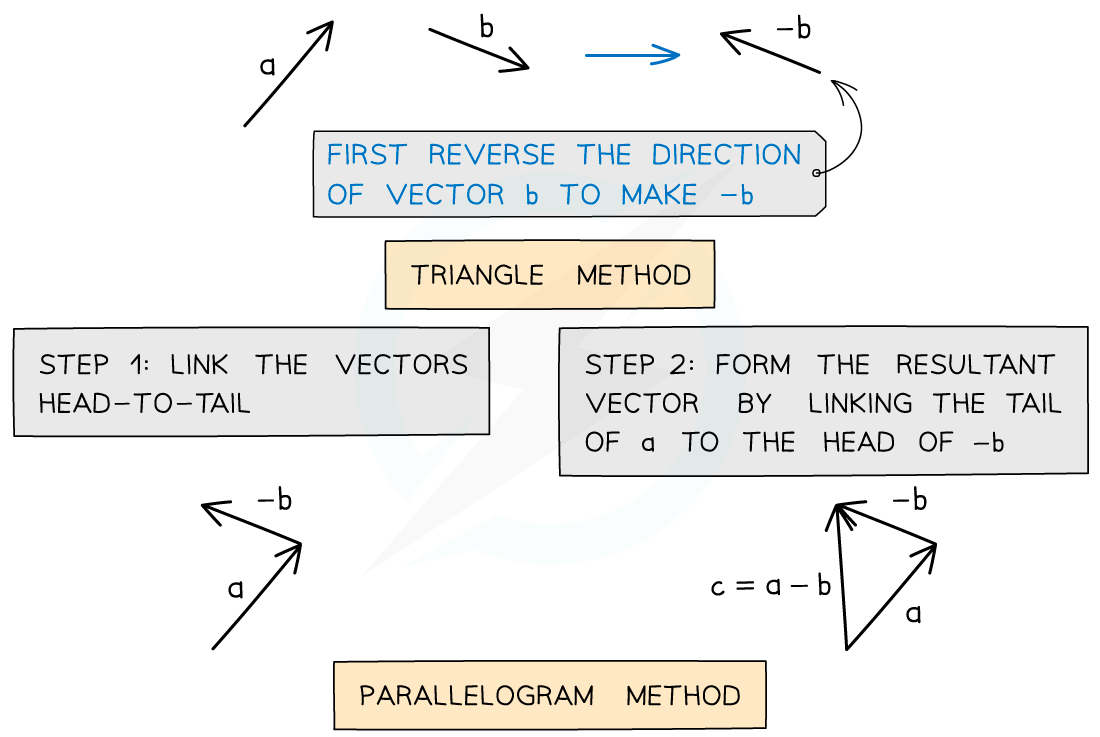Adding Vectors (Edexcel International A Level (IAL) Physics): Revision Note
Exam code: YPH11
Adding Vectors
Vectors can be combined by adding or subtracting them to produce the resultant vector
The resultant vector is sometimes known as the ‘net’ vector (eg. the net force)
There are two methods that can be used to add vectors
Calculation – if the vectors are perpendicular
Scale drawing – if the vectors are not perpendicular
Combining Vectors Using a Scale Diagram
There are two methods that can be used to combine vectors using a scale diagram: the triangle method and the parallelogram method
To combine vectors using the triangle method:
Step 1: link the vectors head-to-tail
Step 2: the resultant vector is formed by connecting the tail of the first vector to the head of the second vector
To combine vectors using the parallelogram method:
Step 1: link the vectors tail-to-tail
Step 2: complete the resulting parallelogram
Step 3: the resultant vector is the diagonal of the parallelogram
Worked Example
Draw the vector c = a + b
Answer:

Worked Example
Draw the vector c = a – b
Answer:


Combining Vectors by Calculating
Combining vectors by calculation is a two-step process
Finding the direction of the resultant using trigonometry
Finding the magnitude of the resultant using Pythagoras

The magnitude of the resultant vector is found by using Pythagoras’ Theorem
The direction of the resultant vector is found from the angle it makes with the horizontal or vertical
The question should imply which angle it is referring to (ie. Calculate the angle from the x-axis)
Calculating the angle of this resultant vector from the horizontal or vertical can be done using trigonometry
Either the sine, cosine or tangent formula can be used depending on which vector magnitudes are calculated

The direction of vectors is found by using trigonometry
Worked Example
A swimmer is crossing a river by swimming due north at 2 m s−1. The current flows east at 5 m s−1.
Determine the resultant velocity of the swimmer's motion.
Answer:
Step 1: Sketch a diagram, including all known values

Step 2: Calculate the magnitude of the resultant using Pythagoras
= 5.4
Step 3: Calculate the angle using trigonometry
θ = 21.8
Step 4: Write the answer in full giving both magnitude and direction of the velocity and all units
The swimmer's velocity is 5.4 ms-1 at 22o to the horizontal direction

Unlock more, it's free!
Did this page help you?